Hohenschwangau Castle is where King Ludwig II spent his childhood, dreaming up the ideas that led to the nearby, world-famous Neuschwanstein.
When I visited, I could practically feel the history pulsing through the rooms where he once lived. The castle sits quietly in the shadow of its more famous neighbor, but honestly, its stories and charm left a mark on me.
Most people rush past Hohenschwangau, eager for Neuschwanstein, but I found this castle gave me a unique, personal glimpse into Ludwig’s early life. The guided tour helped me understand his world and why castles meant so much to him—places of wonder, not just fairy tales.
Instead of crowds, I got a sense of the boy behind the legend. If you’re planning a trip and you’re on the fence about adding Hohenschwangau, I’d say go for it—especially if you’re into history, architecture, or just want to see a different side of Bavaria.
The experience is special and it adds depth to the story of Neuschwanstein.

Hohenschwangau Castle: The Childhood Home of King Ludwig II
Walking into Schloss Hohenschwangau feels like stepping into a storybook, set right against the Alps.
King Ludwig II’s early years here, the castle’s close ties to Bavarian royalty, and the little details of Ludwig’s royal childhood bring a personal side to this famous spot beside Neuschwanstein.
The Story of King Ludwig II
Ludwig II of Bavaria was born in 1845 and spent much of his youth in Hohenschwangau Castle. His father, King Maximilian II, rebuilt the old fortress into a neo-Gothic palace, making it Ludwig’s first real home.
Every room here tells a piece of Ludwig’s story—legends, German folklore, and dramatic wall paintings fill the halls. I always find it fascinating how Ludwig’s imagination took flight in this place.
From the windows, he looked out at lakes, mountains, and, eventually, the construction of his own fairy-tale project: Neuschwanstein Castle. Ludwig took those childhood dreams into adulthood, shaping who he became.
A few quick facts about Ludwig II at Hohenschwangau:
- Year Born: 1845
- Father: King Maximilian II
- Key influence: Art, stories, and the natural landscape
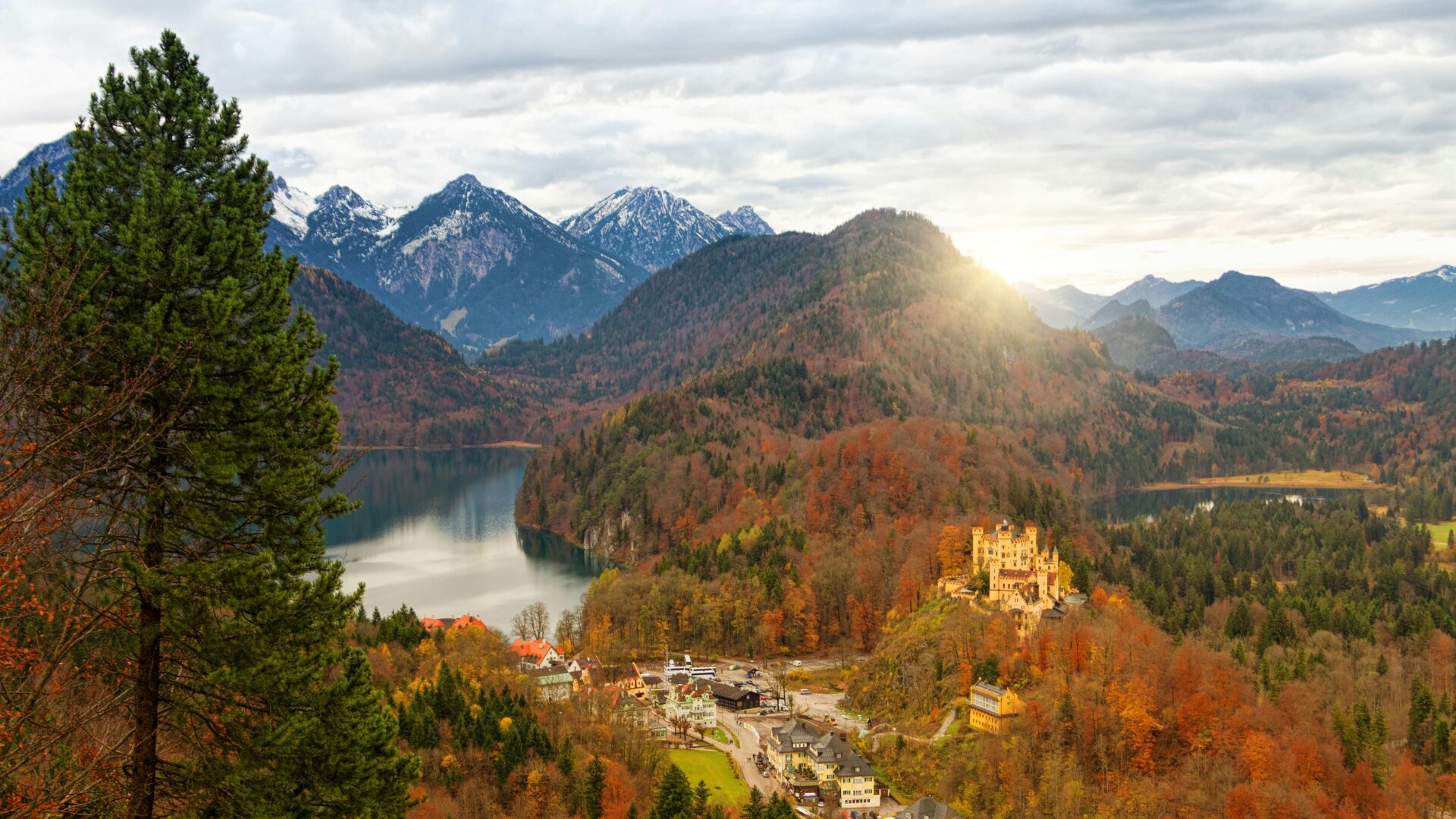
The Significance of Schloss Hohenschwangau
Schloss Hohenschwangau isn’t just a castle—it’s the heart of Bavarian royal history. Maximilian II built it in the 19th century, replacing a medieval ruin and turning it into the royal family’s summer home.
As I wandered its halls, I noticed how the decorations focus on medieval romance and German legends. Frescoes cover the walls, telling stories from heroic tales.
The castle sits on a hill above Hohenschwangau village, with views of lakes and forests that are just as stunning as anything you’ll see from Neuschwanstein.
Practical tips for visiting:
- Location: Southern Bavaria, near Füssen
- Access: Train to Füssen, then bus to Hohenschwangau
- Can’t miss: Lake Alpsee views from the terraces
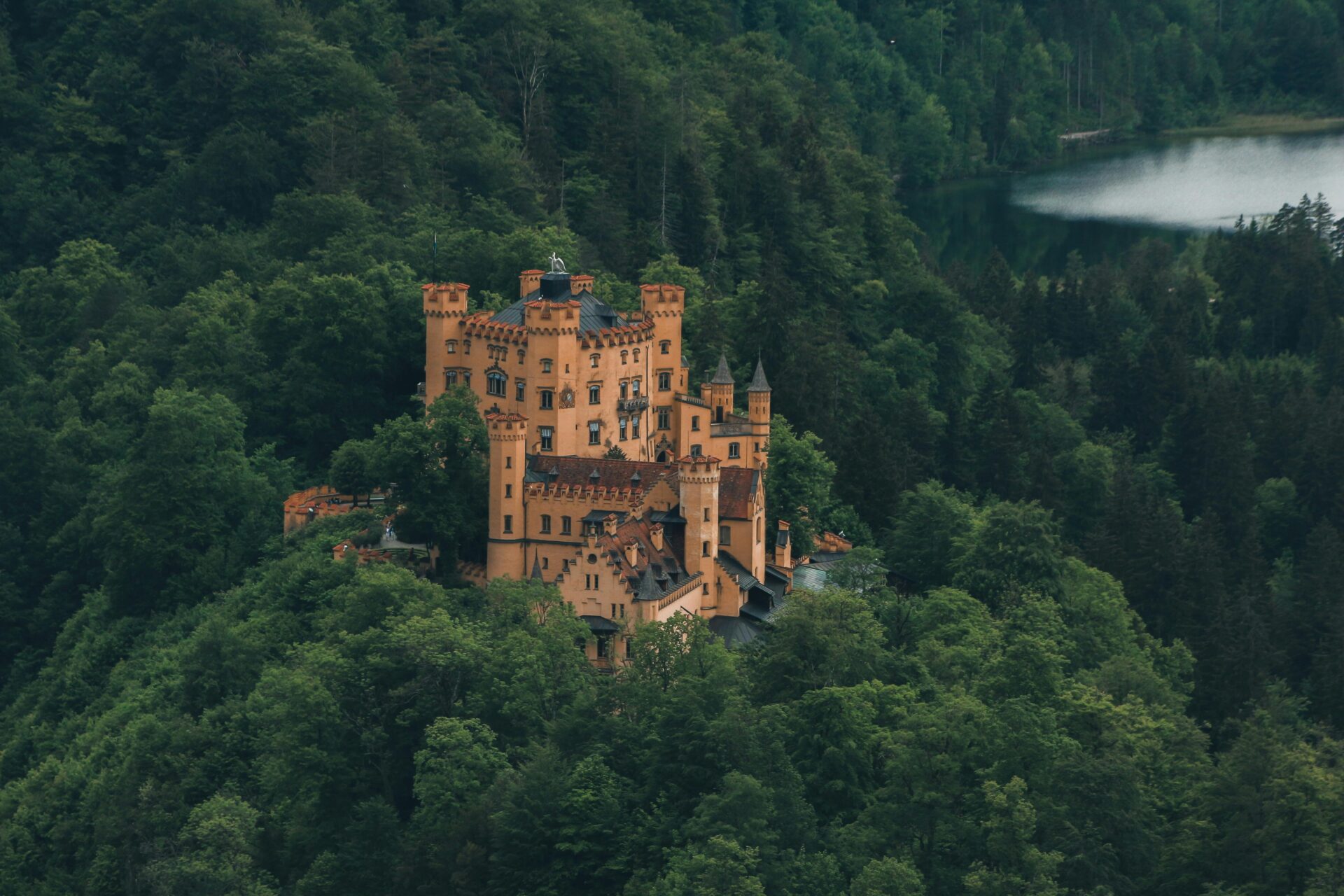
The Royal Life of Ludwig II
Ludwig II’s daily life at Hohenschwangau mixed royal routines with a sense of wonder. I picture him wandering the castle’s richly decorated rooms or reading in the King’s Study under ceilings painted with knights and swans.
The atmosphere here feels peaceful, almost secluded, compared to the grand vision of Neuschwanstein he later built. Maximilian II added a clever 19th-century heating system with hot air pipes that made the castle warmer and more comfortable.
After his father died in 1864, Ludwig made Hohenschwangau his main home. He cherished its privacy and quiet beauty, escaping here whenever he could, especially as he became more reclusive.
A quick look at the royal comforts:
| Room | Feature |
|---|---|
| King’s Bedroom | Swan decor and murals |
| Queen’s Suite | Lake views |
| Dining Hall | Mythological frescoes |
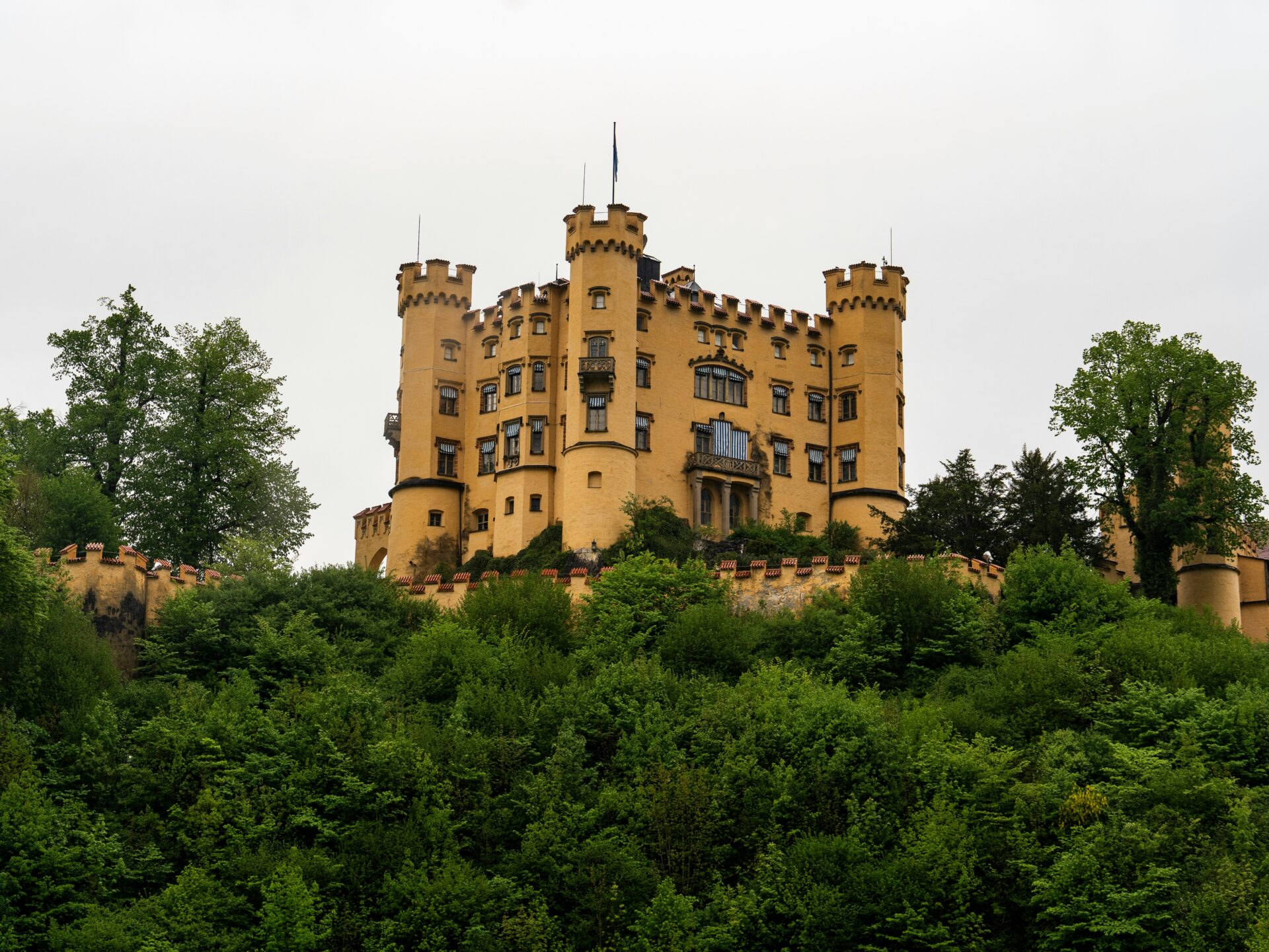
Architectural Marvels: Neo-Gothic Style and Artistic Heritage
Walking inside Hohenschwangau Castle felt like stepping into the 19th century. I found myself surrounded by bold neo-Gothic architecture, lively wall paintings, and rooms filled with royal treasures.
Neo-Gothic Architecture and Restoration
Hohenschwangau Castle’s look comes straight from its neo-Gothic style, which was all the rage in the 1800s. King Maximilian II, Ludwig II’s father, led the restoration that turned an old ruin into a regal home.
He picked neo-Gothic elements for their romantic vibe—pointed arches, ornate window frames, and dramatic towers stand out everywhere. I admired how the castle blends historic shapes with Bavarian charm.
The yellow-painted walls might surprise you, but they glow in the afternoon light. Decorative turrets and battlements create a real fairy-tale scene, and it’s not hard to see how this place inspired Ludwig II’s later passion for castles.
If you’re into architecture, look for carved wooden doors and lattice windows as you explore.
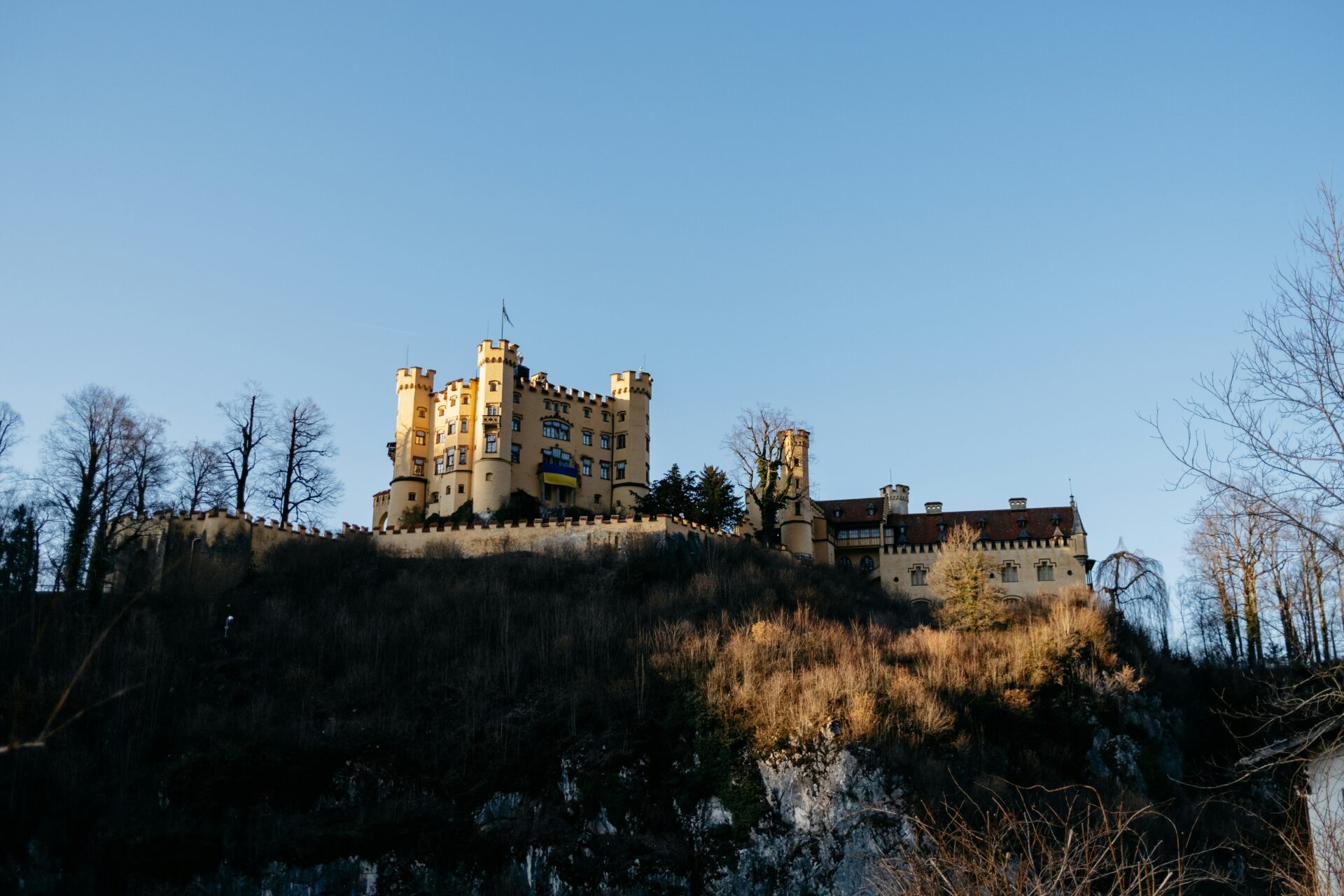
Wall Paintings and Artistic Details
One of the first things I noticed inside were the vivid wall paintings. These frescoes fill nearly every main room, telling stories from German and Bavarian history.
Some murals show the tales of the Swan Knight, a big symbol for the Wittelsbach family. The murals are colorful and lively, giving each room its own character.
I spent a while in the “Hall of Heroes,” covered with scenes that must have fired up young Ludwig II’s imagination. If you love art, pause and check out the details—knights in armor, distant castles, and lush forests.
Key features of the frescoes:
- Mythological scenes: The swan shows up a lot, representing purity and chivalry.
- Local landscapes: Some paintings recreate the nearby mountains and lakes.
- Personal touches: Maximilian II asked artists to include family references and favorite legends.
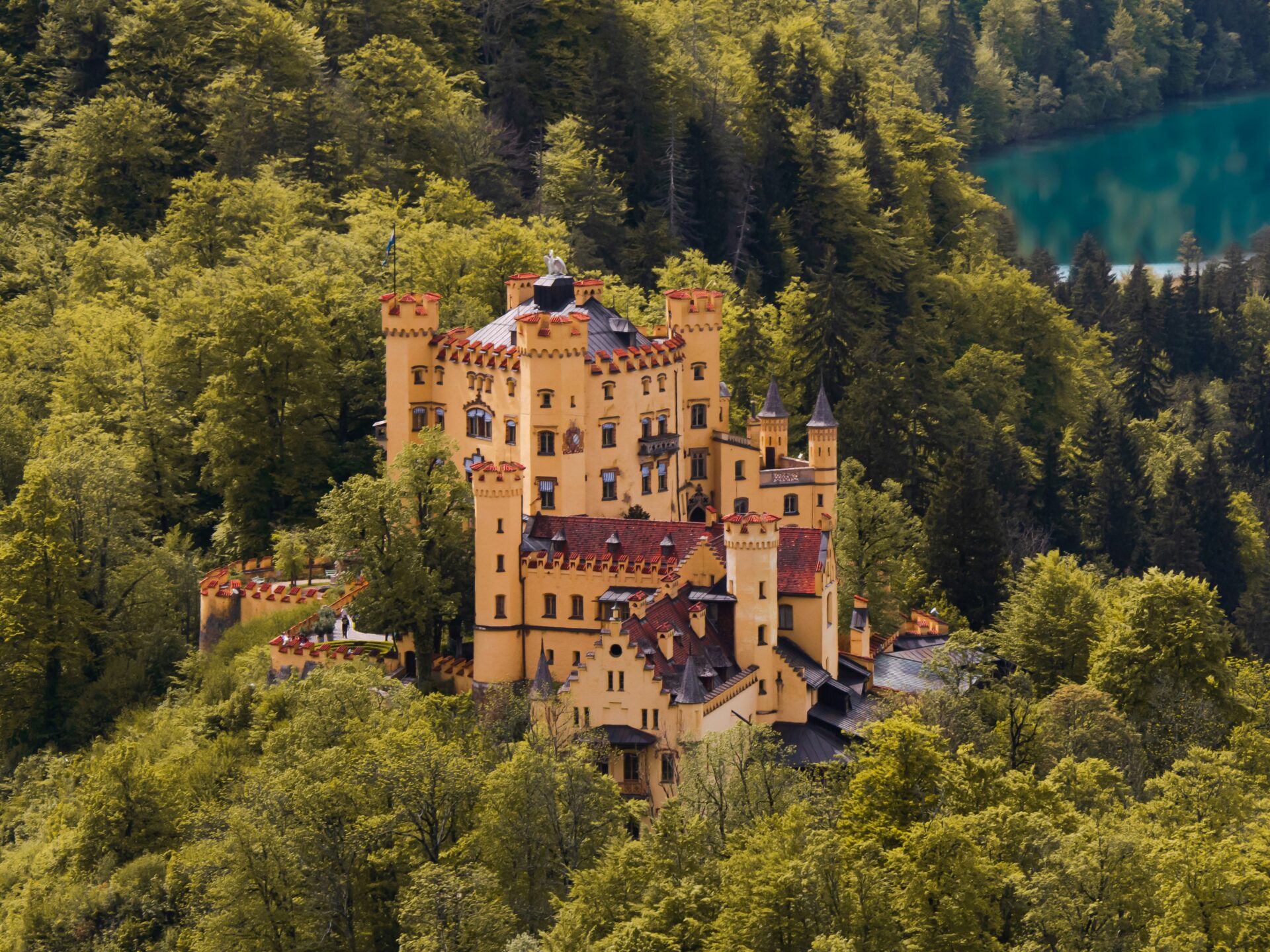
Royal Furnishings and Artifacts
Inside Hohenschwangau Castle, you’ll find original royal furnishings everywhere. I loved seeing the heavy wooden beds, detailed cabinets, and inlaid tables.
Many pieces still sit where they did in the days of King Maximilian II and Ludwig II. Velvet drapes, gold accents, and patterned carpets fill each room.
Personal artifacts—writing desks, musical instruments—reminded me this place was a real family home, not just a royal monument.
Tips for visitors:
- You can only go inside with a guided tour, so plan ahead.
- Watch for Ludwig II’s telescope by the window—it’s a cool detail for history fans.
- Photos aren’t allowed indoors, so take your time to really notice each feature while you’re there.
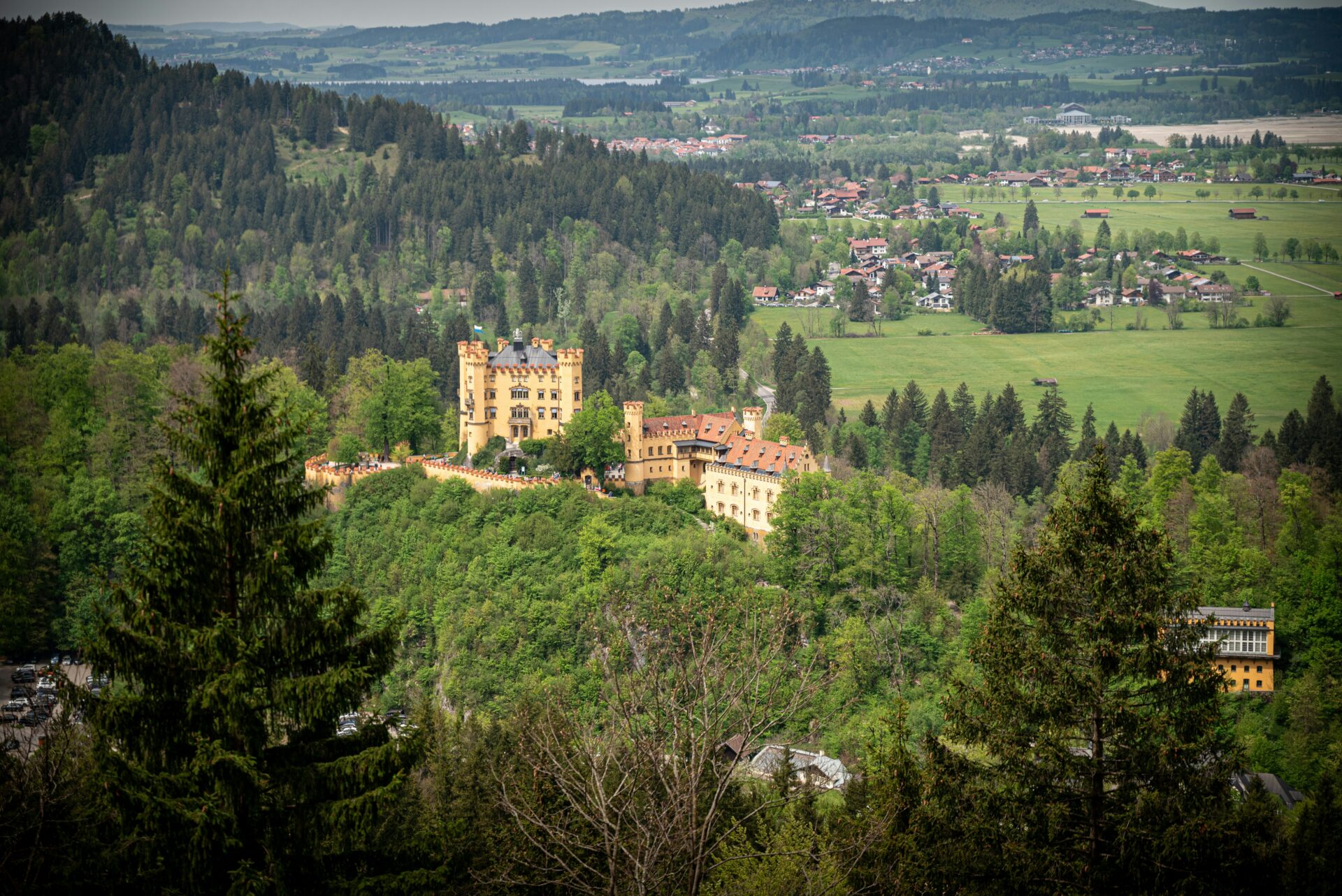
Hohenschwangau’s Idyllic Setting: In the Shadow of Neuschwanstein
Tucked in the foothills of the Bavarian Alps, Hohenschwangau Castle sits in a romantic village surrounded by forests, lakes, and mountains. Neuschwanstein Castle looms nearby, making this area one of the most photogenic places I’ve ever seen.
Panoramic Views of Neuschwanstein
One of the best surprises during my visit to Hohenschwangau was seeing Neuschwanstein Castle from so many angles. Hohenschwangau stands on a hill that faces its legendary neighbor.
From the castle grounds and some higher windows, Neuschwanstein’s silhouette appears framed by forests and cliffs. Standing at a castle balcony, I felt like I was inside a living postcard.
Early mornings are especially pretty, with mist sometimes hanging in the valley. Photographers and history lovers often pause here, soaking in the view of two of Bavaria’s most iconic castles.
It’s easy to see why King Ludwig II, looking out at the site before Neuschwanstein even existed, found endless inspiration here. The view alone makes Hohenschwangau a destination worth considering, even if you’re already planning to visit Neuschwanstein.
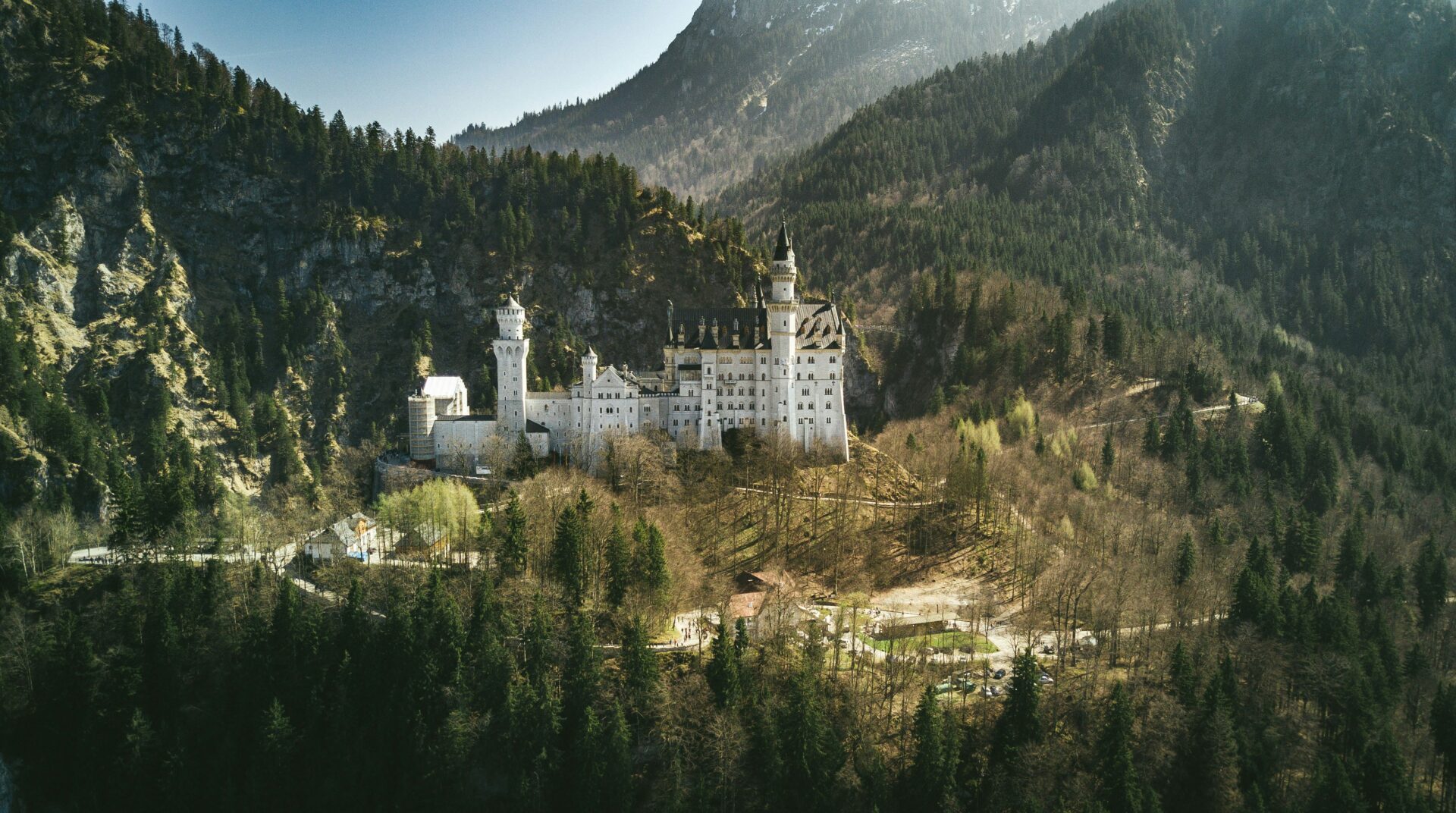
The Use of the Telescope
Inside Hohenschwangau Castle, I spotted an old telescope pointed at Neuschwanstein. This isn’t just for decoration—King Ludwig II actually used it to watch the construction of his dream palace.
He would stand at the window, peering through the telescope to track Neuschwanstein’s progress. As a visitor, I could sense how much this telescope meant to him.
It connected his childhood home at Hohenschwangau to the huge project that became his legacy. Some tours even point out the room where the telescope sits, letting you look through it in Neuschwanstein’s direction.
For me, the telescope is more than just an artifact. It symbolizes a king’s imagination and the link between these two castles in one epic valley.
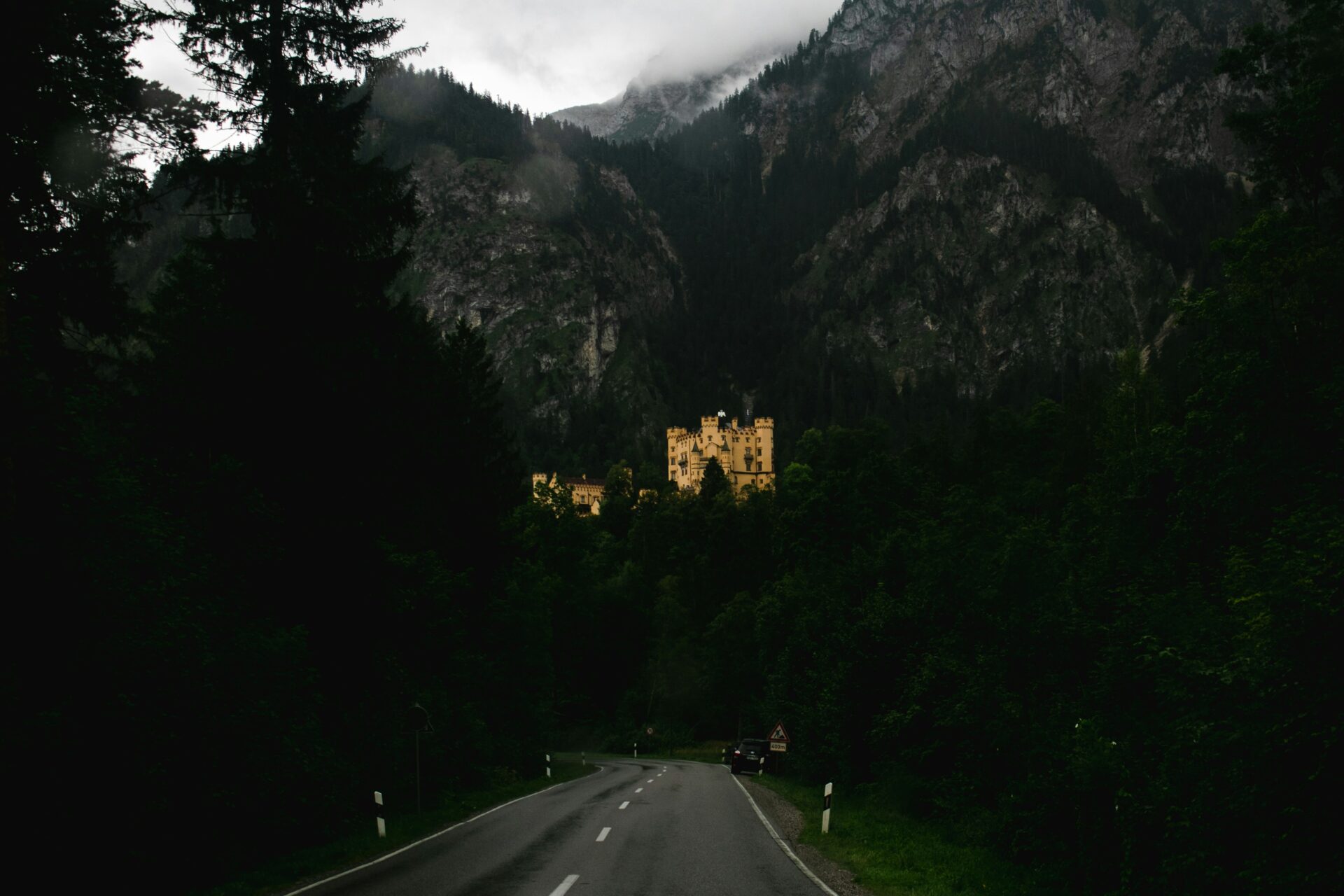
Emerald Lakes and Mountain Landscapes
What really sets Hohenschwangau apart, beyond its royal history, are the natural landscapes all around it. Just below the castle, the Alpsee and Schwansee shimmer—emerald lakes perfect for reflection photos or a stroll along the shore.
I spent time wandering these trails, with mountain peaks towering in the distance. The Ammergau Alps surround you in every direction.
The air feels cool and fresh, smelling of pine. On clear days, you’ll spot boats gliding across the water and hear visitors laughing nearby.
The mix of blue lakes, deep-green forests, and high mountains creates scenery that’s both grand and cozy. These landscapes aren’t just pretty—they shape the whole experience of visiting Hohenschwangau.
Every visit gives you a chance to soak up nature, history, and a bit of royal wonder, all at once.
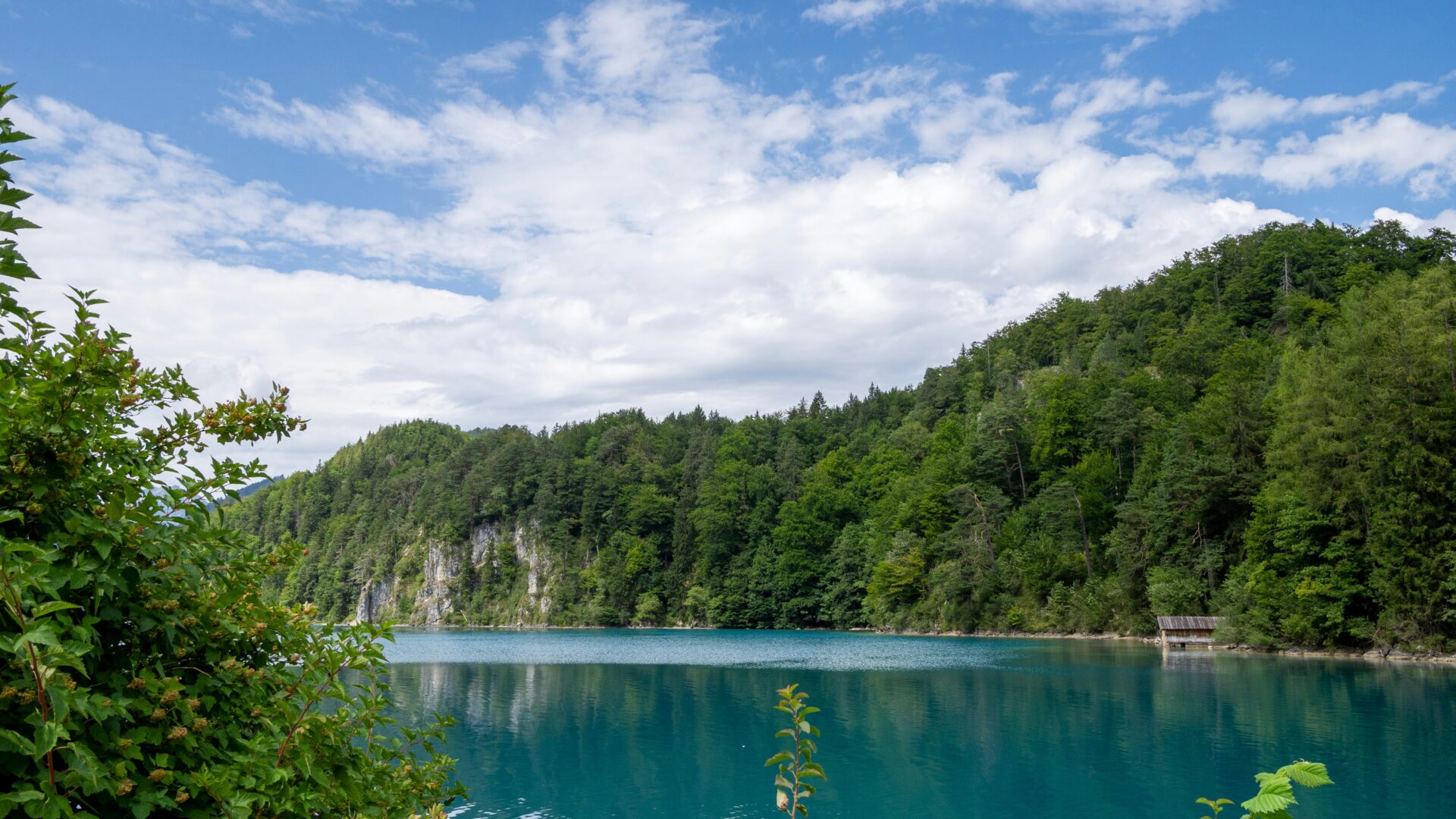
A Royal Retreat: Exploring Hohenschwangau as a Summer Residence
Hohenschwangau Castle served as a peaceful escape for the Bavarian royal family during the warmer months. Its sunlit halls, lively traditions, and gardens always made me feel connected to Bavaria’s history and beauty.
Seasonal Court Life and Festivities
When King Maximilian II called Hohenschwangau his summer home, castle life changed with the season. The royal family—including young Ludwig II and his brother Otto—enjoyed time away from Munich’s busy routines.
I imagine waking up to lake views, with the air buzzing as courtiers prepared for events. Summer brought evening parties, dances, and music in the decorated halls.
The grand salon echoed with laughter and string quartets. Special events, like royal birthdays and visits from foreign guests, added another layer of celebration.
Dressed in lighter clothes and surrounded by friends, I would explore the castle’s rooms or join in the family’s favorite pastimes. Board games, reading, and small performances kept everyone busy.
Evenings often ended with family dinners in candlelit rooms overlooking the Alpsee Lake. Festivities here felt formal yet relaxed—a rare mix that made the castle even more charming.

Gardens and Outdoor Escapes
The gardens at Hohenschwangau burst with color and life in summer. Paths wind through flower beds and shady trees.
I loved seeing bright blooms and fountains near the terraces, all with sweeping mountain and lake views. Walking along gravel trails, I could follow the same routes Marie of Bavaria took with her sons.
She often led Ludwig II and Otto on day trips up nearby hills or to ancient ruins hidden in the forests. A simple walk became an adventure with so much to find—towering trees, hidden benches, and surprises everywhere.
Visitors today can still enjoy these gardens. Benches invite you to pause and soak in the scenery.
If you love the outdoors, a picnic or quiet moment by the castle’s ponds offers a real taste of royal relaxation. The landscape here shows exactly why Maximilian II picked Hohenschwangau as a summer haven—and it’s still just as inviting now.
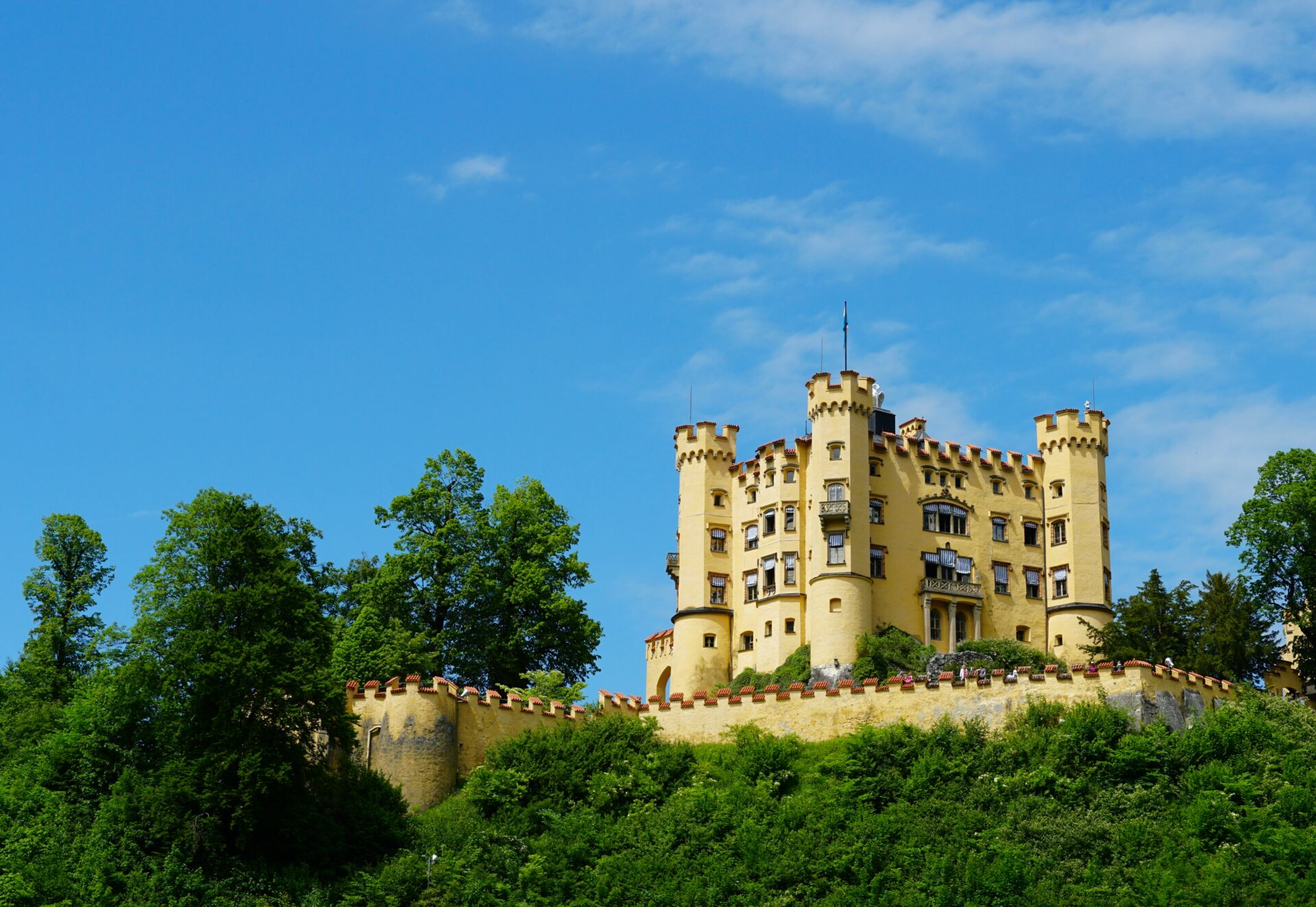
Visitor Experience: Touring Hohenschwangau Castle Today
Stepping into Schloss Hohenschwangau really does feel like you’re slipping back in time. Every detail—painted walls, those charming towers—just speaks to the royal history and the family life of King Ludwig II.
The peaceful setting near Alpsee Lake adds something special to the whole experience.
Guided Tours and Storytelling
When I joined a guided tour of Hohenschwangau Castle, the storytelling honestly stole the show. Guides pointed out the castle’s murals—over 90 wall paintings—that bring legends like the Knight of the Swan right into the room.
These stories made it easy to picture young Ludwig II growing up with all that vibrant art and history around him. Tours take you from one ornate room to another, revealing secret nooks and family treasures.
My favorite part? I stood by the windows, imagining Ludwig’s gaze wandering toward the hills where Neuschwanstein would one day appear. Evening tours sometimes pop up and tend to be quieter.
Hearing stories whispered in those calmer rooms just made everything feel a bit more magical.
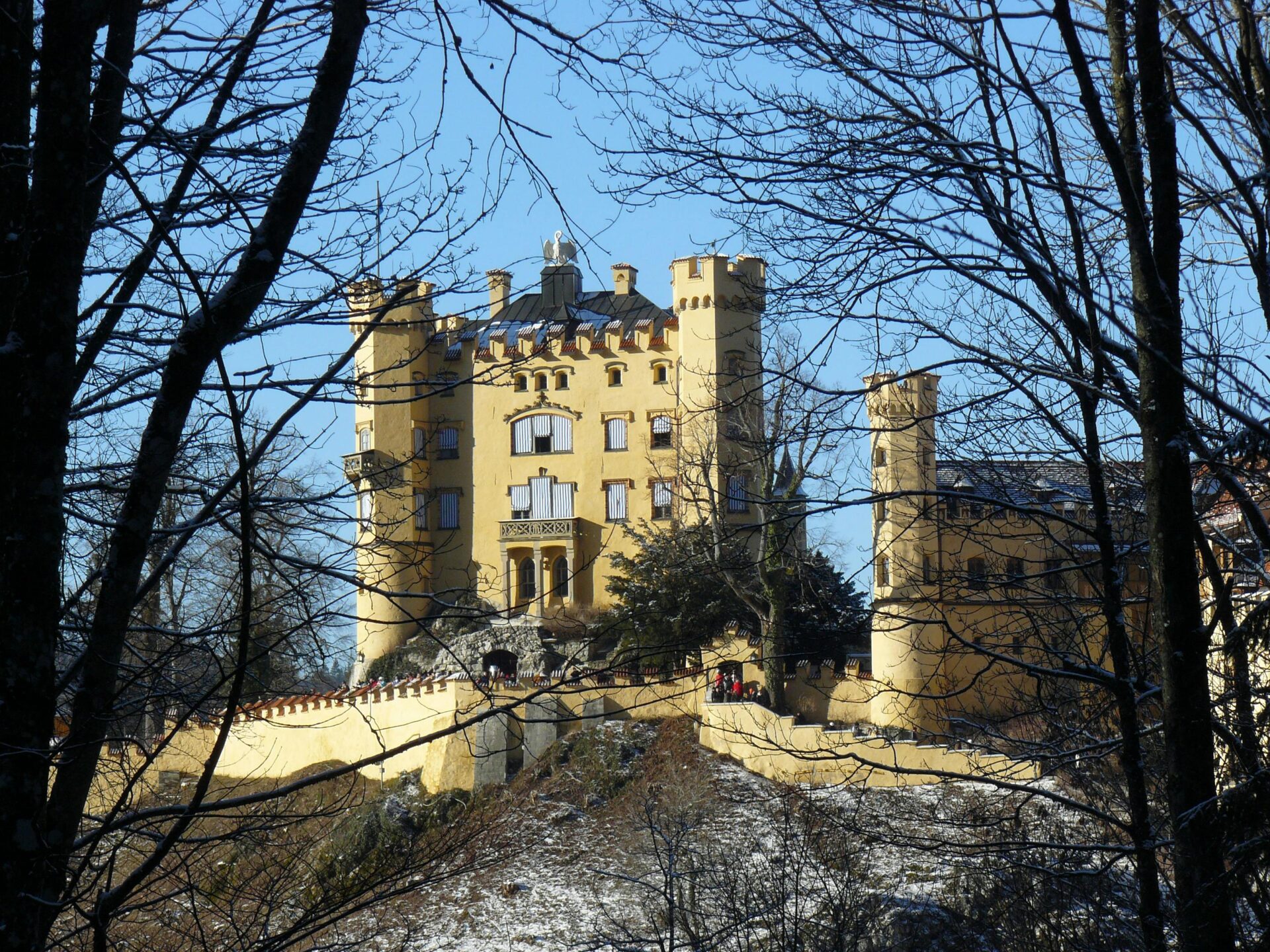
Travel Tips and How to Visit
If you want to make the most of your visit, book tickets ahead—especially in summer, when it gets busy. I’d say arrive early in the morning or later in the afternoon; that’s when the crowds usually thin out.
You’ll find ticket offices at the bottom of the hill, not at the castle itself. Hohenschwangau sits a short walk from Neuschwanstein, so seeing both in one day is totally doable.
I wore comfy shoes for the stairs and the hillside path—definitely worth it. You can get here easily by car or public bus from Füssen.
There are lockers for your luggage at the ticket center. Photography inside isn’t allowed, so I just lingered a bit longer, soaking in the views and little details.

Comparing Hohenschwangau and Neuschwanstein
After I explored both castles, I realized how different the experiences really are. Hohenschwangau feels cozy and personal, with stories of Ludwig II’s childhood and family life tucked into every room.
Neuschwanstein, though, stands out as much bigger and honestly a bit theatrical. Those fairy-tale towers? They actually inspired Walt Disney’s Sleeping Beauty Castle.
Neuschwanstein usually grabs the spotlight. Still, I’d argue Hohenschwangau’s lived-in vibe and all those detailed murals stick with you just as much. The castles sit so close together that you can easily compare their unique styles in a single day.
Here’s a quick side-by-side:
| Castle | Key Feature | Visitor Atmosphere |
|---|---|---|
| Hohenschwangau | Rich wall murals, family history | Intimate, relaxed |
| Neuschwanstein | Fantasy architecture, grand halls | Popular, dramatic |

